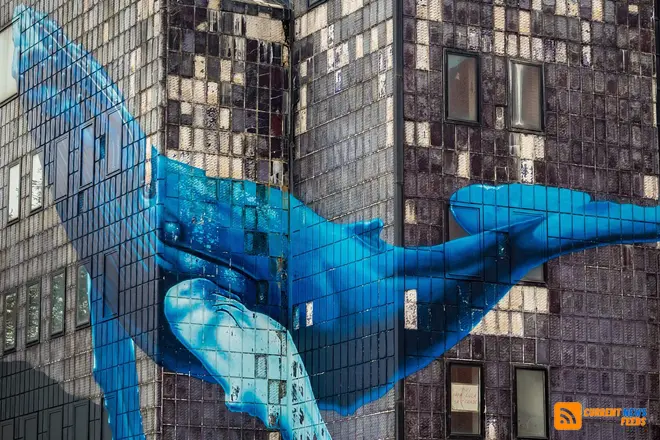
Four murals, visible from afar, have been created over the past few weeks as part of the Landmark Project in Ingolstadt.
The Landmarks Project 2022 has come to an end with the fourth painting. Rafael Gerlach, who is involved in the action not only as an artist but also as a curator, also addresses the project itself in his work on the Europan building on Richard-Wagner-Strasse in Ingolstadt.
The house-high works of art, so-called murals, by internationally renowned urban artists are not to be the last. The initiators and supporters of the project – in addition to Gerlach, the artistic director, Daniel Lange, the Stadtjugendring, as well as the Sparkasse and the cultural department – hope for a continuation next year. The declared goal is to leave its mark on the cityscape and thus turn Ingolstadt into a walk-in art gallery.
Perhaps a tour can be established. The initiators of the project are thinking that this could lead to networking between the individual neighborhoods. In addition, there is a positive external effect on the city. The project has already attracted attention on the international scene and in national media.
In addition to the creative-artistic approach, there is also a social aspect. This is particularly important to the non-profit housing association that provided the wall surfaces. “We want to provide a platform for this form of facade design so that such works of art can be created. Towards our tenants, we want to express our appreciation and achieve identification with the residential area,” explains managing director Alexander Bendzko.
The overwhelmingly positive reactions from the neighborhood to the pictures show that this is successful. For Bendzko, the paintings have another side effect. “We have the impression that the facade design of the artists, who are very well-known in the scene, prevents unwanted graffiti in the neighborhood. Perhaps out of respect for the work of the ‘colleagues'”.
GWG has long been known in Ingolstadt for its support of the art scene. “With our building walls, we provide the canvases for the works of art, so to speak. Some facades needed renovation anyway, so why not do something special?”
The Landmarks project is set to continue. The organizers hope that more walls will be made available to them for artwork. GWG, at any rate, seems ready for further cooperation. “We are looking forward to more,” emphasizes managing director Alexander Bendzko.
“Above all, I'm interested in an independent style”.
Mr. Gerlach, you are active in the Landmarks Project in a dual capacity: as a curator, but also as an artist yourself. First the question to the curator: How did it go? How satisfied are you?
Rafael Gerlach: Since I already knew the artists and their works, I could already foresee that the expected high quality would be achieved. Nevertheless, I am more than satisfied.
What criteria did you use to select the artists?
Gerlach: Basically, I'm not concerned with age or gender, but rather with the continuity of how the artist has developed over the years. I am a very critical and keen observer. Above all, I'm concerned with an independent style. With Akut, it's more the history, since he – with crew colleagues – was one of the first to make photorealism respectable in the scene. Sebas Velasco has a very unique visual language. Classic “portrait painters” are now a dime a dozen in the scene, but there is only a handful who have developed their own style.






